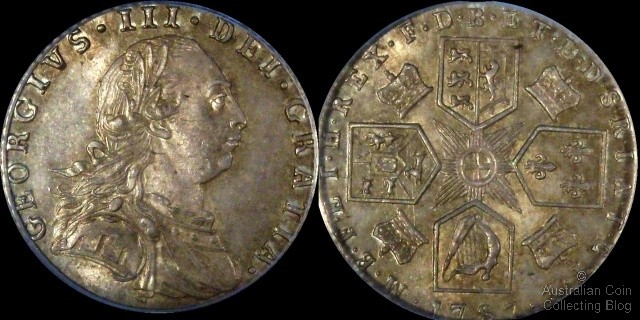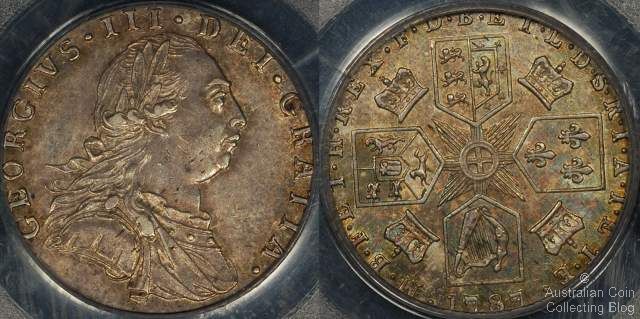
1787 Proclamation Sixpence - Hearts Variety
In my previous entry about Australian proclamation coins I mentioned the 1787 Shilling of Great Britain which was valued at 1s 1d in the proclamation. The brother coin to the 1787 Shilling, the 1787 Sixpence, while not mentioned explicitly in the proclamation was almost certainly traded at the same time for 6d 1/2d. Designed by Luis Pingo and minted from about 3 grams of sterling silver and 21 millimetres in diameter you can see an example of the 1787 proclamation sixpence above. Silver coins were only minted occasionally under George III in the 18th century and 1787 saw the largest mintage of shillings and sixpences until 1816 and the great re-coinage.
The obverse depicts the older laureate bust of George III. The 1787 6d was minted with a single obverse.

1787 Proclamation Sixpence - No Hearts Variety
The reverse depicts cruciform shields with coats of arms and cruciform crowns. The reverse came in two varieties, with or without the semee of hearts in the Hannoverian coat of arms. At the top of this post you can see the with hearts variety of this coin, and above you can see the no hearts variety. The Hannoverian arms are at the 9pm position in the images.
I would use the same principles when purchasing one of these coins as I suggested with the proclamation shilling. Generally originality of surfaces is the key to eye appeal with these coins. A blast white coin is a sign of dipping and I personally would avoid a coin like this. The images above show two examples of coins with very different surfaces. The top coin is a mint state example with probably an old cleaning that is starting to re-tone with a nice golden glow to the coin. The second coin looks to have much more original surfaces, it is a VF example but the violet/steel toning it has make it a more attractive example that the first coin.
Posted by mnemtsas at February 14, 2009 9:20 AM
Subscribe to our Newsletter


